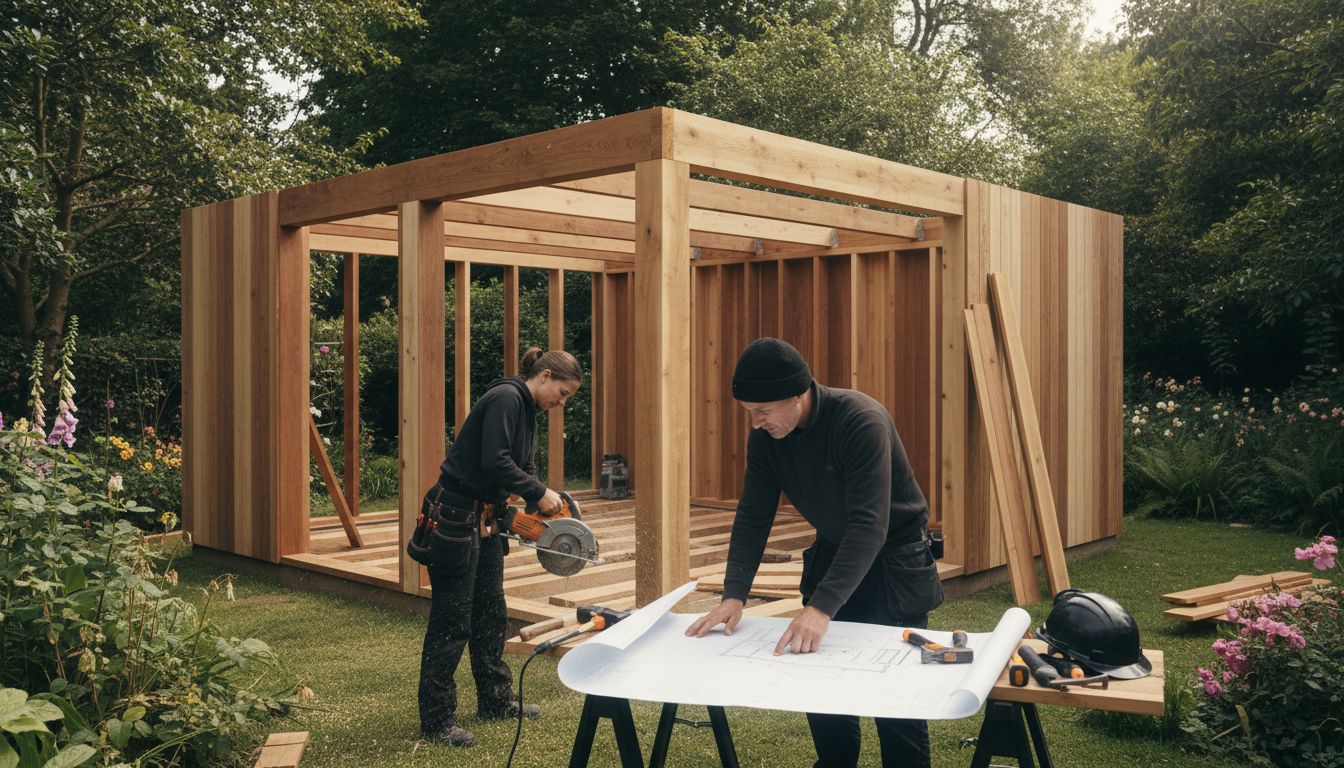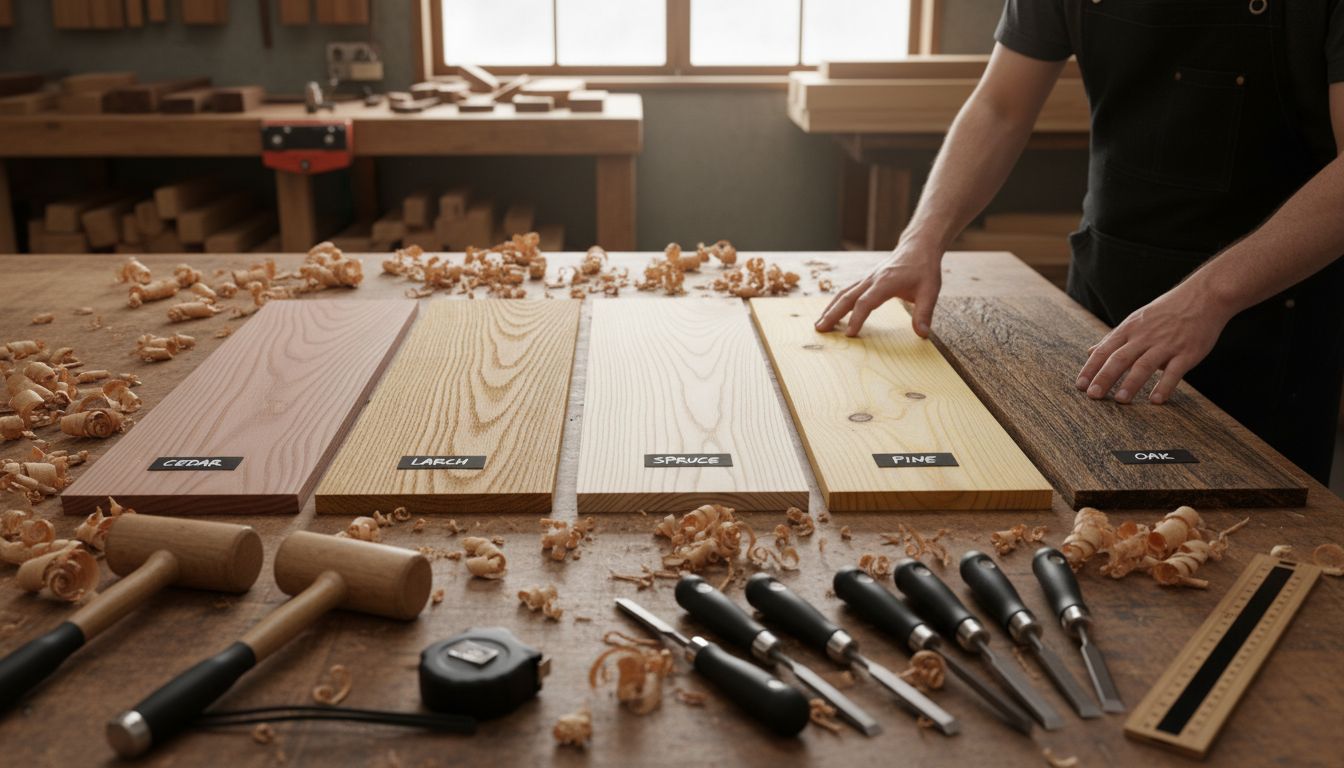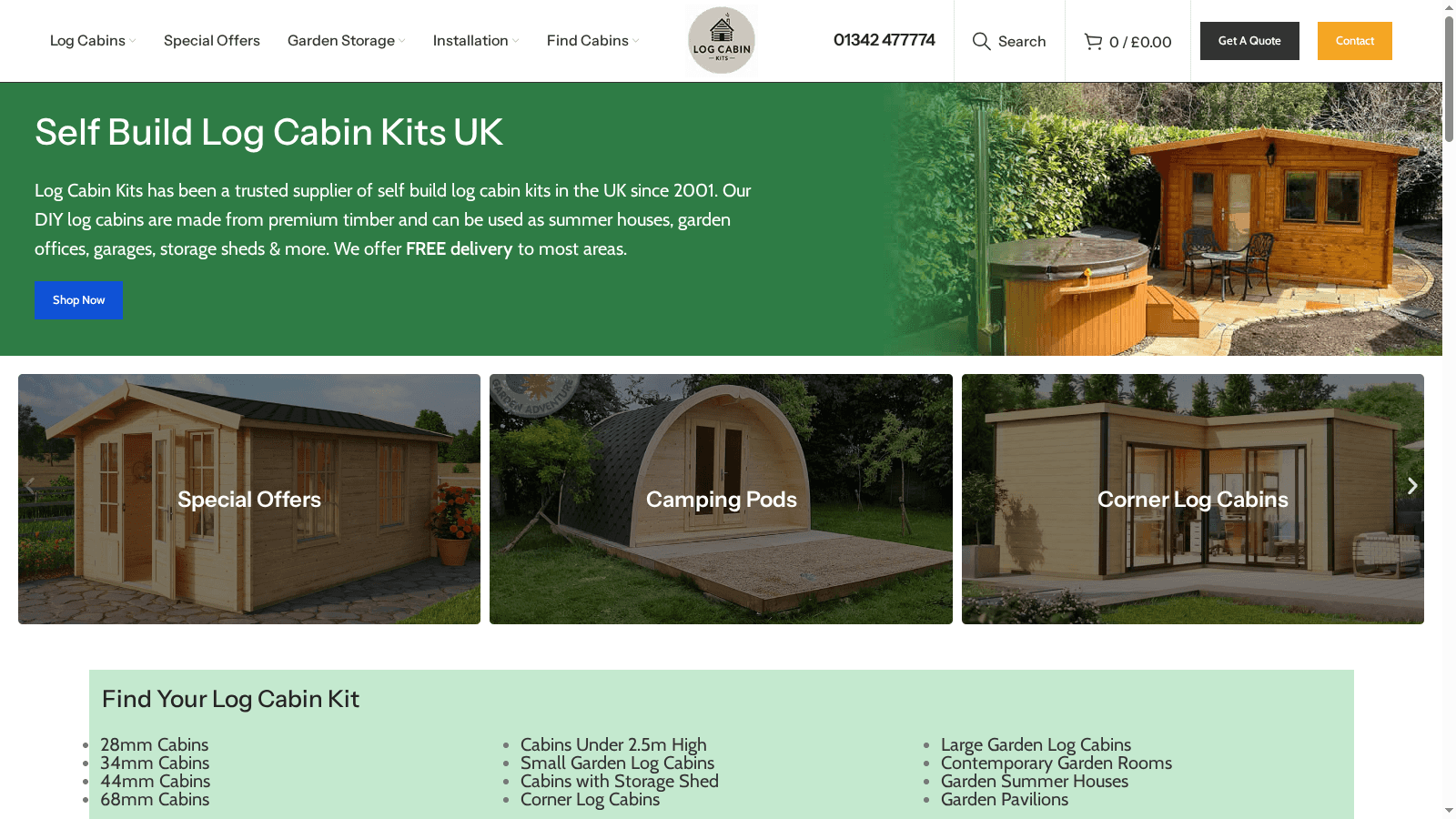Blog
Call Now 01342 477774
Wood Types For Garden Buildings: Ultimate UK Guide

Most british gardeners know that choosing wood for outdoor buildings is not just about looks or price. With over 60 percent of timber structures failing early due to poor material selection, the right wood can make all the difference in durability and long-term value. From handling moisture to resisting insects, understanding the unique properties of each wood type helps you avoid costly mistakes and build a garden space that stands the test of time.
Table of Contents
- What Constitutes Garden Building Wood
- Differences Between Common Timber Species
- How Wood Type Affects Durability And Performance
- Treatment And Certification Requirements
- Budget Vs Premium Wood Trade‑Offs
- Choosing Sustainable And Long‑Lasting Timber
Key Takeaways
| Point | Details |
|---|---|
| Wood Selection is Crucial | Choosing the right wood for garden buildings is essential for durability and performance, with factors like natural resistance and moisture absorption impacting longevity. |
| Understanding Timber Species | Each timber species has unique characteristics that affect performance; understanding these can guide effective wood selection based on specific project needs. |
| Budget vs Premium Wood | The choice between budget and premium wood involves trade-offs; while budget wood may be cheaper initially, it often incurs higher maintenance costs over time. |
| Prioritising Sustainability | Sustainable timber selections consider environmental impact, sourcing practices, and long-term durability, which is crucial for responsible building. |
What Constitutes Garden Building Wood
Choosing the right wood for garden buildings requires understanding the fundamental characteristics that determine durability, performance, and longevity. According to thewpa, wood selection involves several critical factors beyond simply picking a timber type.
At its core, garden building wood must possess specific qualities that enable it to withstand outdoor environmental challenges. These include moisture resistance, structural integrity, and natural durability against decay and insect damage. As tdca emphasises, timber used in external structures must be carefully classified based on its exposure and intended usage.
Key characteristics of suitable garden building wood include:
- High density for structural strength
- Natural resin content providing additional weather protection
- Straight grain pattern minimising warping potential
- Low moisture absorption rate
- Resistance to fungal and insect attacks
Professional timber experts recommend focusing on wood species that naturally demonstrate these protective qualities. Woods like cedar, larch, and pressure-treated pine are particularly well-suited for garden building construction due to their inherent resilience and long-lasting performance. How Tree Species Influences the Quality of Your Garden Log Cabin provides deeper insights into selecting the most appropriate timber for your specific garden building project.
Differences Between Common Timber Species
Understanding the nuanced differences between timber species is crucial for selecting the most appropriate wood for garden buildings. thewpa highlights that each wood type brings unique characteristics that significantly impact performance, durability, and aesthetic appeal.
Timber species commonly used in garden building construction demonstrate remarkable variations in key attributes. According to tdca, these differences include natural durability, moisture resistance, and structural integrity. Some woods excel in specific environments, while others provide more versatile performance.
Key timber species comparisons reveal distinct advantages:

- Cedar: Naturally weather-resistant, lightweight, with exceptional rot prevention
- Larch: High density, superior strength, excellent external performance
- Spruce: Cost-effective, relatively lightweight, good for structural applications
- Pine: Widely available, takes preservative treatments well, economical choice
- Oak: Extremely durable, heavy, provides outstanding long-term structural integrity
Professional timber experts recommend carefully evaluating these species based on specific project requirements. Best Tree Species for Building Log Cabins provides comprehensive insights into selecting the most suitable timber for your unique garden building needs, ensuring optimal performance and longevity.
How Wood Type Affects Durability And Performance
The relationship between wood type and structural performance is far more complex than many garden building owners realise. thewpa emphasises that wood durability isn’t solely about the species, but also involves critical factors like treatment, environmental exposure, and inherent material characteristics.
According to tdca, wood performance in garden buildings is determined by multiple interdependent factors. These include natural resistance, moisture absorption, structural density, and chemical treatment. Different timber species respond uniquely to environmental stressors, which directly impacts their long-term performance and structural integrity.
Key performance indicators for wood durability include:
- Decay resistance: How well the wood resists fungal and bacterial breakdown
- Moisture tolerance: Ability to withstand humidity and rainfall without significant degradation
- Structural stability: Maintaining shape and strength under environmental pressures
- Insect resistance: Natural or treated protection against wood-boring insects
Professional timber experts recommend understanding these nuanced characteristics when selecting wood for garden buildings. How Tree Species Influences the Quality of Your Garden Log Cabin offers comprehensive insights into selecting timber that will provide optimal durability and performance for your specific garden building requirements.
Treatment And Certification Requirements
gov provides critical guidance on timber certification, highlighting the importance of understanding comprehensive treatment standards for garden building materials. Navigating the complex landscape of timber requirements demands careful attention to both regulatory compliance and quality assurance protocols.
According to thewpa, timber treatment involves multiple layers of independent verification to ensure product safety and performance. The Benchmark Quality Approval Schemes play a crucial role in establishing industry standards, covering everything from chemical formulations to manufacturing processes that determine wood’s long-term durability.
Key certification and treatment requirements include:
- Preservative treatment levels: Ensuring wood can withstand environmental challenges
- Chemical composition verification: Confirming treatment meets safety standards
- Performance documentation: Providing independent assessment of wood durability
- Environmental compliance: Meeting UK regulatory frameworks for timber processing
Professional timber experts emphasise the significance of comprehensive certification. Best Tree Species for Building Log Cabins offers additional insights into selecting timber that not only meets technical standards but also provides optimal performance for garden building projects.
Budget Vs Premium Wood Trade‑Offs
Choosing between budget and premium wood for garden buildings requires careful consideration of long-term value versus immediate cost savings. While budget timber might seem financially attractive initially, the potential hidden expenses can significantly impact your overall investment.
The trade-offs between budget and premium wood extend far beyond initial purchase price. Budget wood typically involves lower-grade timber that may require more frequent maintenance, replacement, and potentially costly repairs. Premium wood, conversely, offers superior durability, better structural integrity, and enhanced resistance to environmental challenges.
Key considerations in the budget versus premium wood decision include:
- Initial cost: Budget wood is significantly cheaper upfront
- Longevity: Premium wood provides extended lifespan and reduced replacement frequency
- Maintenance requirements: Budget wood often demands more frequent treatments and repairs
- Aesthetic quality: Premium wood offers superior finish and visual appeal
- Structural performance: Higher-grade timber provides better environmental resistance
Are Garden Log Cabins Worth The Price Tag Over Traditional Sheds? provides additional insights into understanding the genuine value proposition of investing in quality timber for your garden building project. Professional builders consistently recommend viewing wood selection as a long-term investment rather than a mere short-term expense.

Choosing Sustainable And Long‑Lasting Timber
Sustainability in timber selection goes beyond environmental considerations, encompassing long-term performance, economic value, and responsible resource management. Selecting timber for garden buildings requires a holistic approach that balances ecological responsibility with practical structural requirements.
The criteria for sustainable and long-lasting timber extend far beyond simple durability metrics. Sustainable timber involves understanding the wood’s origin, harvesting practices, regeneration potential, and its ability to withstand environmental challenges without frequent replacement. This approach considers not just the immediate performance of the wood, but its entire lifecycle impact.
Key characteristics of sustainable and long-lasting timber include:
- Responsible forest management: Timber sourced from certified sustainable forests
- Low environmental impact: Minimal processing and transportation carbon footprint
- Natural durability: Inherent resistance to decay and environmental degradation
- Regenerative potential: Wood from forests with robust replanting strategies
- Local sourcing: Reducing transportation emissions and supporting regional forestry
Sourcing Sustainable Timber for Log Cabins provides comprehensive insights into selecting timber that meets both environmental and structural performance standards. Professional builders emphasise that true sustainability represents a balanced approach between ecological responsibility and exceptional building performance.
Choose the Perfect Wood for Your Garden Building Today
Selecting the right timber for your garden building can feel overwhelming given the many factors discussed like wood durability, treatment, and sustainability. You want a garden space that lasts long and performs well against weather, decay, and insects without constant upkeep. That is why making an informed choice about your wood type is essential to avoid costly repairs and maintenance down the line.

Explore bespoke and custom garden buildings at logcabinkits.co.uk where quality timber and expert craftsmanship come together. Learn more about selecting the best tree species for your project in our guide on Best Tree Species for Building Log Cabins. Ready to invest in wood that delivers long-term value and aesthetic appeal visit our homepage to start designing your perfect garden building now at logcabinkits.co.uk. Act today to ensure your garden building stands strong through every season.
Frequently Asked Questions
Suitable wood for garden buildings should possess high density, natural resin content for weather protection, a straight grain pattern to minimise warping, low moisture absorption, and resistance to decay and insect damage.
The type of wood chosen directly impacts its durability and performance. Factors such as natural resistance to decay, moisture tolerance, structural stability, and insect resistance all play roles in determining how long a garden building will last.
Cedar is naturally weather-resistant, lightweight, and has exceptional rot prevention qualities, making it an ideal choice for outdoor applications like garden buildings where exposure to moisture is a concern.
While budget wood may be cheaper initially, it often requires more maintenance and may not last as long as premium wood. Premium wood offers superior durability, reduced replacement frequency, and better structural performance, providing better long-term value.
